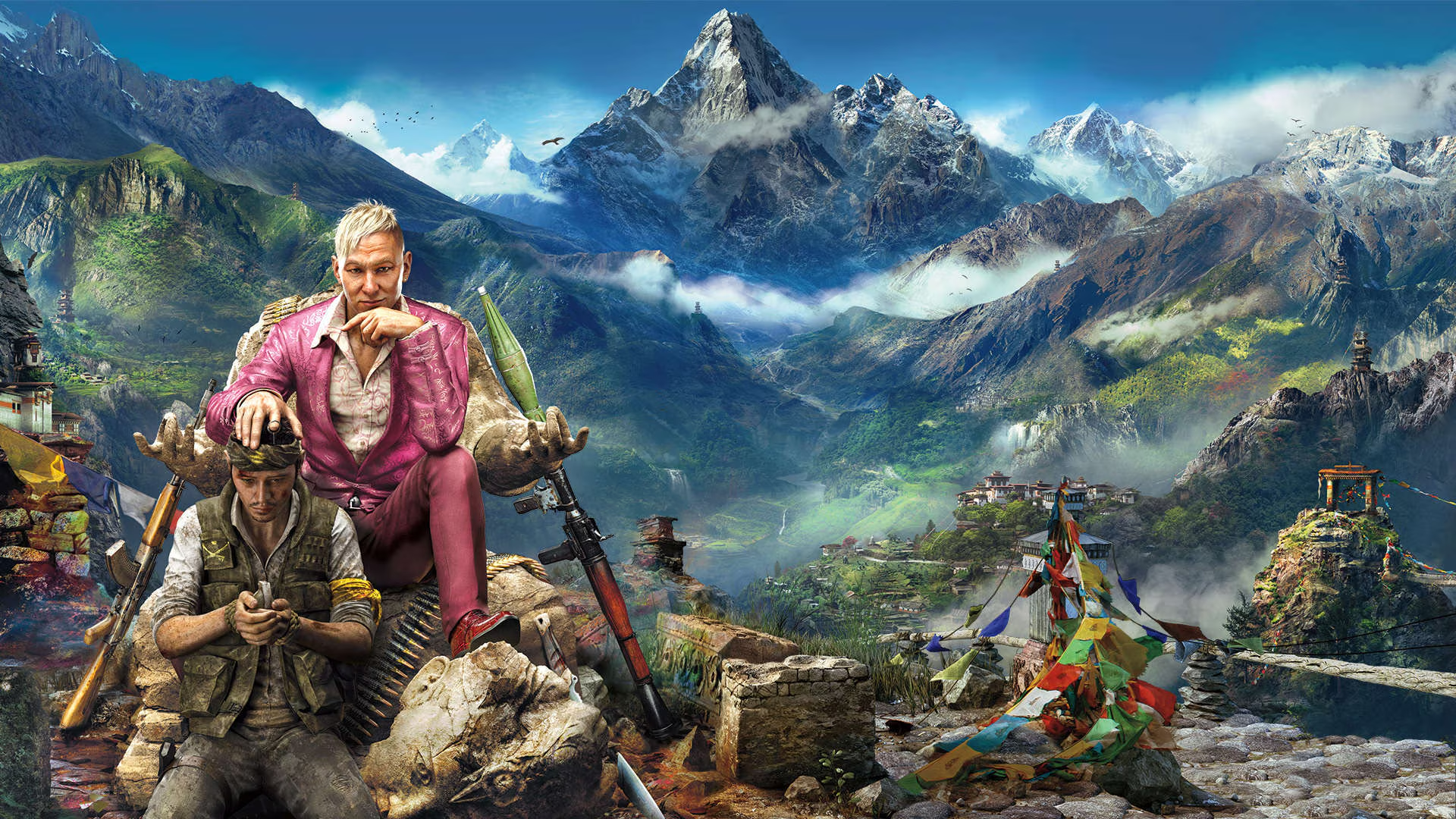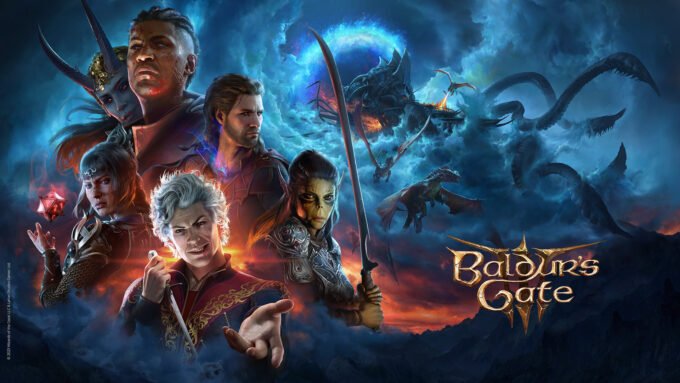Power struggles are never pleasant. Particularly when you’re caught in the middle of one. Oh, and you’re also trying to take down a tyrannical dictator at the same time.
Ubisoft greatly expanded the moral dilemmas in Far Cry 4, having touched very briefly on them in Far Cry 3. This adds an interesting extra dimension to the gameplay experience, as players are forced to consider the fallout of their decision-making. Let’s face it, we all like to think of ourselves as virtuous people. Yet, Far Cry 4 makes it clear that nobody’s moral compass is ever completely perfect.
The backdrop to the power struggle
Ajay Ghale has travelled to Kyrat to fulfil his mother’s last wish – to return her ashes to Lakshmana. Unfortunately, Kyrat is in the middle of a bloody and violent civil war, with rebel group The Golden Path trying to remove dictator Pagan Min. Ajay is captured by Pagan but is able to flee with the help of Sabal, one of The Golden Path’s commanders.
It turns out that Ajay is the son of Golden Path founder Mohan Ghale. But there’s a problem. Ajay is now stuck in Kyrat – he can’t go back to Pagan, and the Royal Army have seized the country’s only airport and locked down the borders. Left with no other choice, Ajay agrees to help the rebels in their fight to oust Pagan.
With the son of Mohan Ghale fighting alongside them, The Golden Path are able to reinvigorate their campaign, liberating territory and expanding beyond their small outpost in the mountains. However, it quickly becomes apparent that there’s not just one power struggle going on.
Forget The Golden Path versus Pagan Min. Sabal’s locked in his own power struggle with fellow commander Amita, and the rift is so deep it threatens to kill the rebels’ hopes of a liberated nation for good. It’s clear that with the two leaders frequently butting heads, someone needs to act as an independent arbiter to break the deadlock. And that’s where you come in!
Choosing a side
As someone who has – at the moment – no skin in the game, Ajay is the only one who can be trusted to act without motive. Throughout the course of the game, it becomes clear just how stark the contrast in values and aims is between Amita and Sabal.
Sabal is an ardent supporter of traditional values, while Amita argues for progress at all costs. These traits come out throughout the game, but particularly in the missions that force you to choose a side. And the power struggle only intensifies the more you progress through the story, as the line between good and evil becomes increasingly blurred.
Traditionalism vs Progress

Throughout of the course of the game, there are several “Balance of Power” missions that can alter the power struggle in either Amita or Sabal’s favour.
The first such mission sees you have to choose between saving lives and military intelligence. The Royal Army is about to decimate a small rebel outpost, which will result in The Golden Path losing some of its best soldiers. Sabal asks you to rescue the troops, while Amita wants you to sacrifice them and collect military intelligence from a different site.
Although the first moral dilemma may have been difficult to choose, it only gets more challenging from here. The next two “Balance of Power” missions provide an even starker examination of your moral compass. Sabal wants to eliminate Kyrat’s drug supply, whereas Amita wants to save the drugs and use them to finance the revolution and the rebuilding of Kyrat once Pagan is deposed. Moral values may not pay bills, but is turning the country into a drug state really a better option?
Whoever you choose to side with, the fourth mission is the last chance to alter the power struggle to align with your ideals. Sabal sees the Jalendu Temple as a sacred symbol of Kyrat’s heritage. Amita, on the other hand, wants it destroyed – she sees it as patriarchal and outdated. Whoever you side with here will become the leader of The Golden Path, but the power struggle isn’t over just yet.
Reap what you sow
By this point in the game, the writing is on the wall for Pagan Min. He’s lost his best commanders, and is all alone. The Golden Path gears up to eliminate him once and for all. Unfortunately, the rift between Amita and Sabal has reached the point of no return.
It was always going to end this way.
Whoever you have chosen to lead The Golden Path will tell you to get rid of the other to cement their undisputed leadership of the organisation. However, if you choose to let them live, they will put themselves into voluntary exile and leave Kyrat for good.
The Aftermath of the Golden Path Power Struggle

You were always being used as a pawn by both Amita and Sabal in their quest for power. If you didn’t see it before, the aftermath of The Golden Path’s coup against Pagan makes it undeniable.
If you sided with Sabal, he becomes drunk on religious fanaticism. Not only does he force Amita’s little sister Bhadra to become Tarun Matara – the living embodiment of the goddess Kyra – but he also executes anyone who stood in his way to becoming the leader of The Golden Path.
Unfortunately, Amita is just as bad, if not even worse. Despite her earlier protestations, Amita also reveals her true colours. She doesn’t care about the Kyrati people – she only cares about keeping her power and getting riches. Villagers are forced into drug production in the name of the economy, and children are conscripted into the Kyrati military. Sabal was right. Kyrat has become “a land of equal opportunity where everyone’s a slave.”
The Way Out

Fortunately, the game allows you to destroy the monster you created. If you chose to spare Pagan’s life when you storm his base, he’ll drop a bombshell on you. With him gone, you are now the King of Kyrat.
Not Sabal. Not Amita. You.
One of the two former Golden Path leaders is out of the picture. The other is a despicable, power-hungry tyrant. Hunt them down and kill them. You know it’s the right thing to do. With both Amita and Sabal now eliminated, you can begin to shape Kyrat in your image.
Just don’t become another tyrant. Kyrat has had more than enough of those!

















Leave a comment